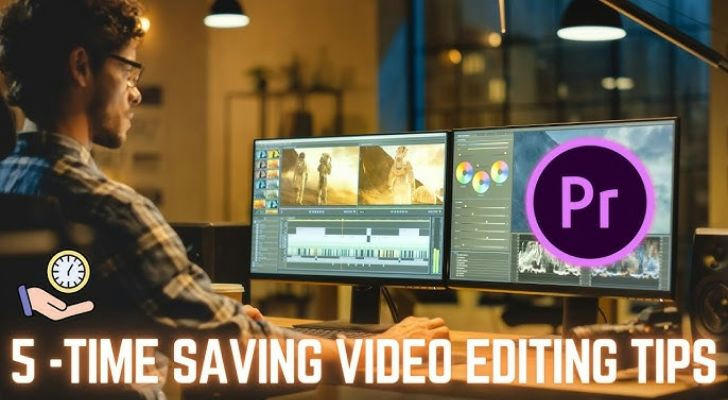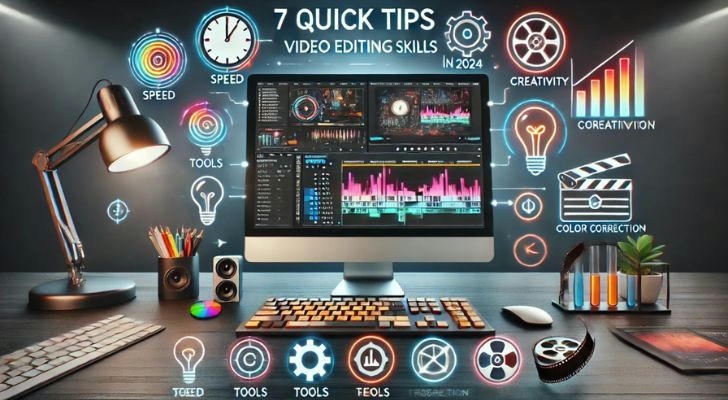From Beginner to Pro: A Complete Guide to Video Editing and Production
Video editing and production are skills that have grown immensely in importance over recent years. With the rise of social media, YouTube, and video-based marketing. If you’re starting from scratch, don’t worry! This guide will walk you through the essential steps and key tips to help you level up your video editing game.

Why Video Editing Matters
Before diving into the "how-to" part, it’s important to understand why video editing is so crucial. According to a study by HubSpot, videos are 1,200% more likely to be shared than text and images combined. In other words, videos are a key tool in connecting with your audience, whether you’re creating content for a business, personal project, or social media.
With the right video editing skills, you can turn raw footage into polished, professional-quality content that captures attention and drives results. Whether you’re making a short video for Instagram or a full-fledged YouTube documentary, solid editing can make all the difference.
Step 1: Get the Right Tools
Before starting, having the right tools in place is essential. Video editing can be complex, but the software you choose will play a major role in making the process smoother. There are many options out there, but here are some popular choices:
• Adobe Premiere Pro: A professional-grade tool used by many in the industry. It offers advanced features but may require some learning.
• Final Cut Pro X: A great option for Mac users with a user-friendly interface and powerful editing features.
• DaVinci Resolve: Known for its incredible color correction capabilities, it’s a great option for those looking to dive into more technical aspects of video editing.
• HitFilm Express: Perfect for beginners who need essential features with the ability to upgrade as they improve.
For beginners, it’s not necessary to dive straight into the most expensive software. Start with something simpler and explore as you go.
Step 2: Master Basic Editing Techniques

Once the software is set up, the next step is learning the core video editing techniques. You don’t need to be an expert right away, but understanding the basics will go a long way.
Cutting and Trimming: The ability to cut unnecessary parts out of your footage is essential. Learn how to split clips and remove excess footage.
Transitions: Smooth transitions between clips make the video flow better. Don’t overuse fancy transitions—keep it simple to maintain a professional feel.
Adding Music and Sound Effects: Audio is often just as important as visuals in video production. Background music and sound effects can elevate the mood, but be careful not to overpower the message of your video.
Text and Titles: Adding text for titles, subtitles, or annotations can help communicate information clearly. Make sure the fonts are legible, and the style matches the tone of the video.
Step 3: Color Grading and Effects
Color grading is one of those advanced techniques that can turn your good video into a great one. With just a few tweaks, you can set the mood, create a more polished look, and make your video visually appealing. Some key things to learn:
• White Balance: Fix any color imbalances to make the footage look more natural.
• Saturation and Contrast: Adjusting these settings can dramatically change the look of your video.
• Creative Color Grading: If you want to give your video a unique feel, you can apply different color grading techniques, such as giving the video a warm, cool, or cinematic look.
Many editing programs offer built-in color grading tools, so you don’t need to rely on plugins, though experimenting with additional effects can add an extra layer of flair.
Step 4: Optimizing for Your Audience
Once the editing process is done, the next step is making sure the video is tailored for your target audience. Different platforms have different requirements, and it’s essential to optimize your video to make the most of the platform’s algorithm.
• Video Length: According to Wistia, videos that are between 2 and 3 minutes long have the highest engagement rates. You can always adjust the length depending on the platform (shorter for social media, longer for YouTube).
• Resolution: Ensure your video is high quality (1080p or 4K if possible) to maintain a professional look across different devices.
• Captions: Adding captions or subtitles makes your content accessible and increases its engagement. A study by Rev showed that 85% of videos on Facebook are watched without sound, so captions are key.

Step 5: Practice and Experiment
The best way to improve your video editing skills is to practice regularly. Don’t be afraid to experiment with different techniques and styles. Take inspiration from other creators, analyze their work, and try to incorporate similar techniques into your videos.
Pro Tip: Editing is a creative process, so the more you explore, the better you’ll get. It might take a few tries to perfect a video, but don’t get discouraged—each mistake is an opportunity to learn.
Conclusion
Video editing and production can seem overwhelming at first, but with the right mindset and tools, anyone can go from beginner to pro. By mastering the basics, optimizing for your audience, and consistently practicing, you’ll be well on your way to creating engaging videos that leave a lasting impression.
To sum up:
Invest in good tools Learn and practice basic editing techniques Play around with color grading and effects Optimize your videos for each platform Never stop experimenting and improving
With time and dedication, you’ll not only enhance your video editing skills but also gain a powerful tool for connecting with your audience.
